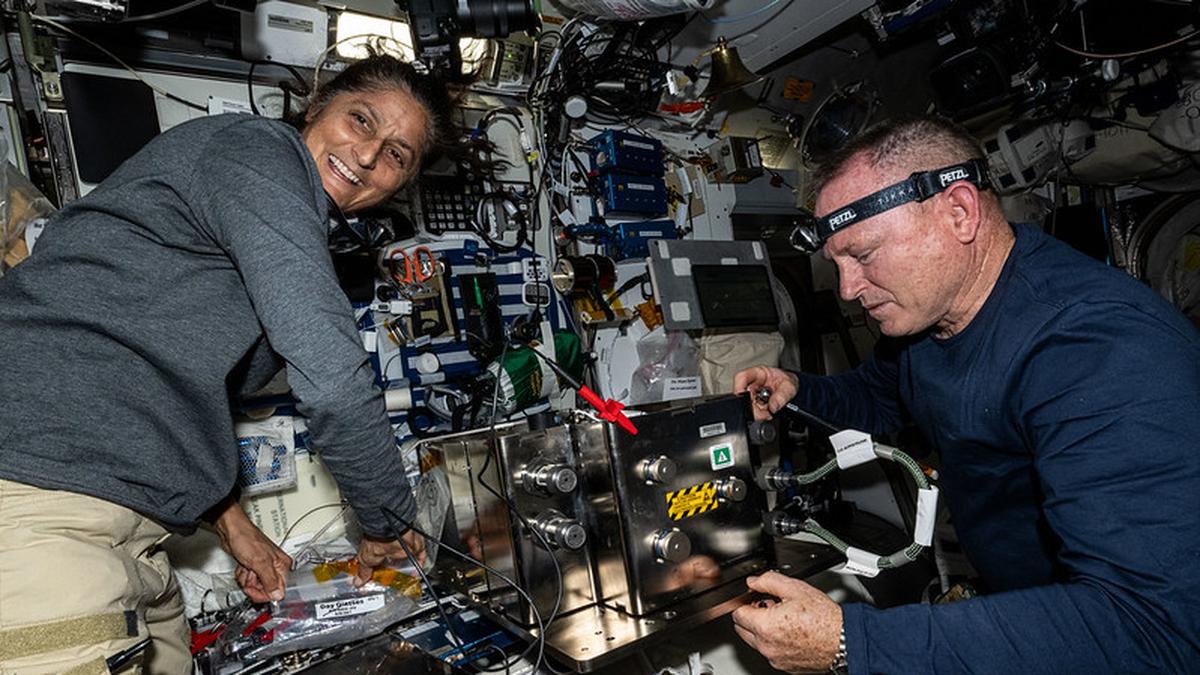What does spaceflight do to the human body?

- 01 Sep 2024
In News:
- On August 24, 2023, NASA announced that Boeing’s Starliner crew capsule was deemed unsafe for the return of astronauts Sunita Williams and Barry Wilmore from the International Space Station (ISS).
- Williams and Wilmore’s stay onboard the ISS has been extended until February 2025, with their return planned via a SpaceX crew capsule in September 2024.
- Starliner will undock and return uncrewed.
Understanding Space
Definition and Characteristics
- What is Space?
- Space is defined as the area above the Karman line (100 km above sea level), transitioning from ‘earth-like’ to ‘space-like’ conditions.
- Microgravity Explained
- Astronauts experience microgravity due to the diminishing force of gravity, not complete absence, leading to various physiological effects.
Environmental Challenges
- Radiation in Space
- The Van Allen radiation belts, located above the Karman line, pose a significant challenge, exposing astronauts to charged particles.
- Historical research during the Apollo program determined that exposure levels in these belts are not harmful.
Effects of Space on the Human Body
Physiological Changes
- Bone Health: Microgravity leads to bone weakening, potentially causing renal stones due to excess mineral deposition.
- Digestive Issues: Food movement slows, contributing to potential weight gain.
- Eye Health: Spaceflight-associated neuro-ocular syndrome (SANS) affects about 20% of astronauts, with 70% of long-duration astronauts affected, causing vision impairment.
- Cardiovascular Effects: Reduced workload on the heart can result in muscle shrinkage.
- Muscle and Blood Changes: Muscle mass and strength decline; increased loss of red blood cells necessitates dietary adjustments.
Cognitive and Psychological Factors
- Balance and Orientation: Altered signals in microgravity challenge the brain's ability to maintain balance.
- Psychological Impacts: Isolation, fatigue, and stress from family separation contribute to mental health challenges.
Mitigating the Effects of Space
Strategies and Research
- Exercise and Routines: Strict exercise regimens and predictable routines are critical for maintaining astronaut health during missions.
- Nutritional Adjustments: Research is ongoing into how nutrients and drugs are metabolized in space.
- Monitoring and Countermeasures: Development of portable optical coherence tomography machines for SANS detection is underway, alongside potential countermeasures like lower body negative pressure and artificial gravity exposure.
Ongoing Research Initiatives
- Understanding Spaceflight Effects: The "space omics" studies aim to identify how space environments affect human biology, exemplified by NASA’s Twins Study.
- International Collaboration: Programs like Japan’s KAKENHI and Europe’s Space Omics Topical Team, along with U.S. research protocols, are exploring biological responses to space conditions.
Duration of Human Space Missions
Historical Context and Current Trends
- Increased Duration: The average time spent in space has risen from one month in the 1960s to six months in the 2020s.
- Current Missions
- Williams and Wilmore will potentially spend 256 days in orbit.
- Record holders: Valeri Polyakov (437 days), Frank Rubio (370 days), and Oleg Kononenko (over 1,000 days across missions).
Future Aspirations
- Long-Duration Missions: The shift from lunar missions to potential permanent moon bases and human missions to Mars presents new challenges in safety and health for astronauts.
